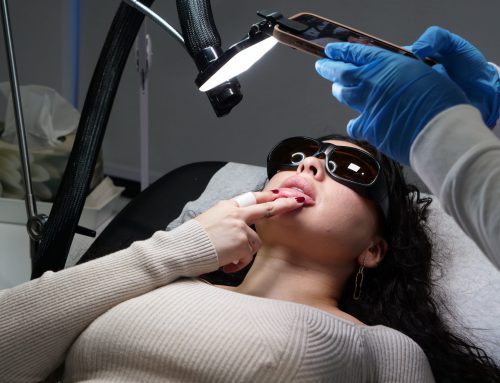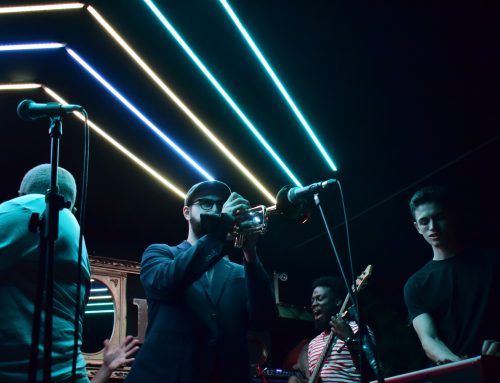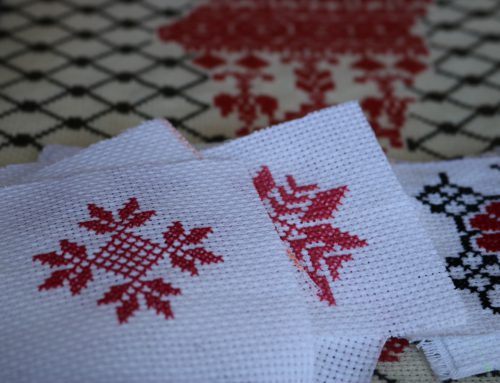Curly Hair Education is Lacking in Montreal’s Hairdressing Schools, So Independent Entrepreneurs Are Creating Alternatives
WORDS: Marissa Ramnanan
Photography: Elisa Barbier & Marissa Ramnanan
Nancy Falaise, the owner of curly hair studio Salon Académie Nancy Falaise, began embracing her natural hair once she started chemotherapy after being diagnosed with breast cancer at just 36 years old.
“I lost all my hair—my eyebrows, my everything. I looked at myself in the mirror, […] and I was like, OK. You have no hair, you have no eyebrows; who are you?”
Back then, the answer was clear to her. “I’m God’s creature,” she said, almost like a mantra or a prayer. “I’m wonderful, and whatever comes back, I’m just going to embrace it. That’s it.”
For Falaise, that meant no more perms.
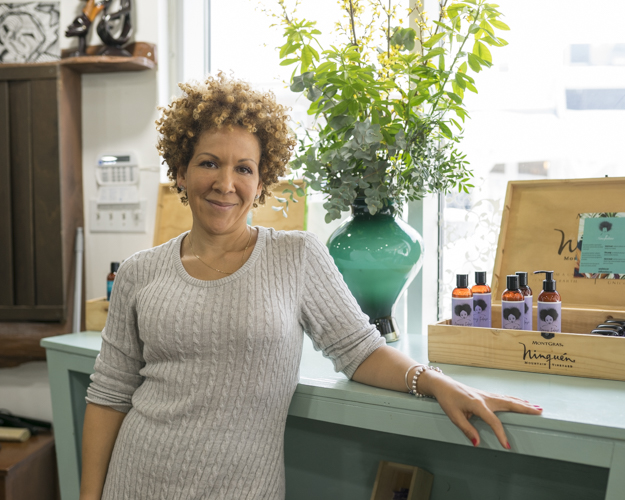
Nancy Falaise poses with products at her parlour Salon Académie Nancy Falaise in the Plateau. Falaise’s parlour offers care-products for curly hair. Photo Elisa Barbier
Falaise, now 43 years old, did extensive research to see if there was any relationship between the chemicals used in perms and cancer.
“I wanted to know if [my illness] had to do with chemicals that I was using. It didn’t [in the end], but I wanted to put all of the chances on my side not for it to come back, and to change my lifestyle. And I said, well, one of the things I could do is stop relaxing my hair.”
The changes Falaise made in her personal life also affected the way she worked as a hairdresser and entrepreneur. She stopped chemically relaxing her clients’ hair, and moved toward the natural hair business in Montreal, opening Salon Académie Nancy Falaise in the Plateau-Mont-Royal in 2017.
“I don’t want to do something that will change your hair pattern forever,” said Falaise. “We do everything except relax. […] The only straightening that we do is with the brush and the flat iron, and it only lasts until your next shampoo.”
A change in business: from chemically relaxing to going natural
Falaise explained that rather than losing customers after dropping chemical relaxers, she actually gained clientele. That was when she realized the urgent need for curly hair salons in Montreal—and more so, hairstylists who actually know what they’re doing.
“There’s a humongous lack [in curly hair education],” said Falaise. “There’s a huge need.”
She explained it’s not usually part of Montreal’s hairdressing school curriculums, which means many hairdressers in Montreal don’t know how to style curly hair.
“A lot of women with curly hair have nowhere to go. I’m just really fulfilling a need,” she said.
That’s why Falaise decided to start offering teaching services, both in her own salon and at others, for hairdressers looking to improve their natural curly hair knowledge and skills.
“Most people who have curly hair are ethnic women—let’s keep it real. And, for too long, ethnic women were not getting the same treatment as Caucasian women when they came to get their hair done,” she said. “I want to change that. That’s why it’s important to me.”
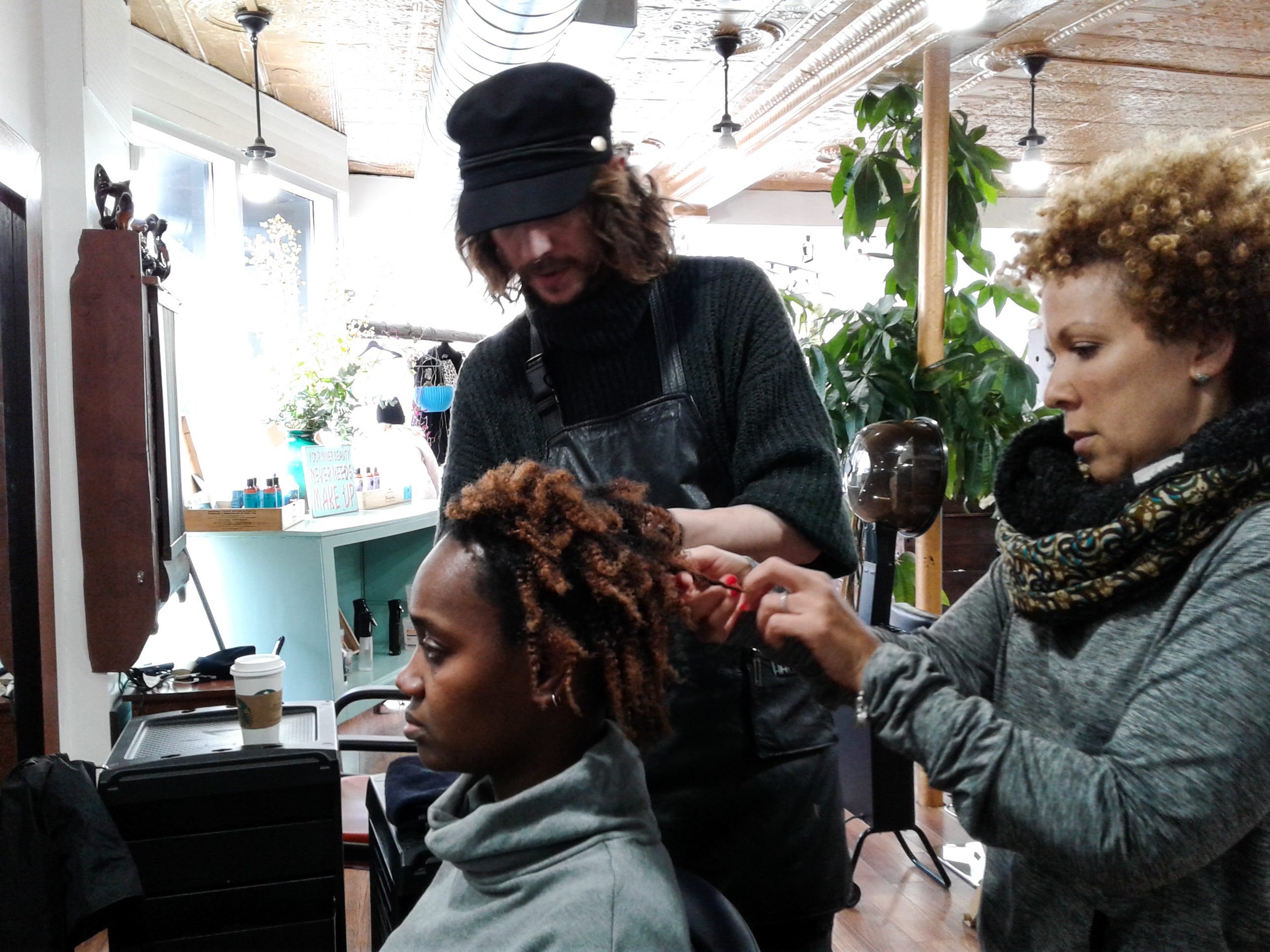 Joshua Ryan (middle) works on his customer Rokia Sanogo’s hair (left), and owner Nancy Falaise (right) helps. “I think people who have hair like mine pay a lot of money to take care of it,” said Sanogo. She continued that there is a need for curly hair salons in the city, and has no idea why there aren’t many available in Montreal. Photo Marissa Ramnanan
Joshua Ryan (middle) works on his customer Rokia Sanogo’s hair (left), and owner Nancy Falaise (right) helps. “I think people who have hair like mine pay a lot of money to take care of it,” said Sanogo. She continued that there is a need for curly hair salons in the city, and has no idea why there aren’t many available in Montreal. Photo Marissa Ramnanan
The staff at Falaise’s salon is the epitome of her work: there are several white hair stylists that work for her who have learned to style curly hair.
One of them, Joshua Ryan, said learning how to style curly hair was something he needed to do to be a better, well-rounded hairstylist.
“I thought it was more crucial than beneficial to actually learn how to take care of natural curly hair, because at least this way, when women come in, they don’t feel like their hair is going to be absolutely destroyed by some white guy,” he said. “Because that’s normally what the standard is, and they [the stylists] don’t know how to take care of their hair.”
Falaise said professional salons that cater to curly hair are very hard to find.
“The options that you’re left with—they don’t know what they’re doing. They put braids on too tight. They put relaxers on your hair, they don’t really know how to cut,” Falaise said.
Kathleen Charles has embraced her natural hair, but has been a victim of said stylists in the past.
“I’ve gone to African hair stylists [before]; they do things like braids and weaves and things like that, but they don’t know how to do natural hair—they’re not really specialized in that,” she remembered.
Charles started getting braids when she was a young girl. One day, during her sixth or seventh visit to the salon that year alone, she remembers asking “why.”
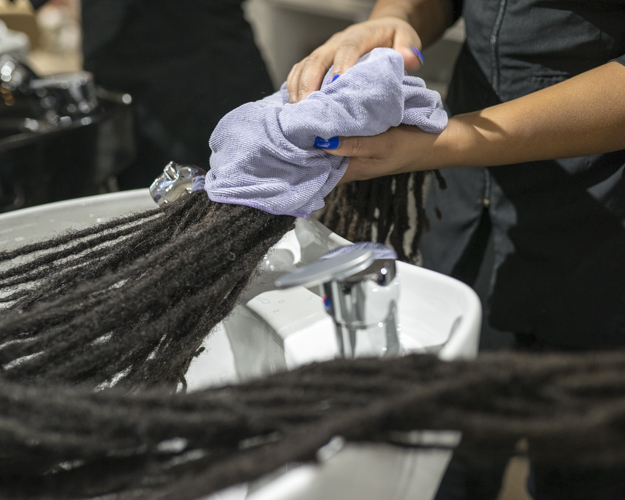
After a shampoo, dreadlocks need to be patted down with a towel to be dried. Photo Elisa Barbier
“There was no end goal. We weren’t doing the braids so that my hair would grow out, or so that my hair would be healthier. We were just doing the braids because I had to have braids in my hair,” she said, pointing to the severe damage years of styling had caused. “They ripped my edges out […] They disappeared–gone with the wind. I feel like it’s a common experience. Anywhere that braids hair and wants to braid it tightly, you risk having traction alopecia [gradual hair loss usually caused by pulling hair] along your hairline.”
Inhairitance: curl spa has a goal of embracing natural curly hair
Abisara Machold, the owner of a natural hair salon called Inhairitance Curl Spa in Montreal’s St. Henri neighbourhood, quickly became aware of this lack of specialized businesses in the city when she moved here from Europe in 2010.
Machold found her first curly hair product vendor online—and she had to meet that person on a downtown street during the vendor’s work break so she could buy her hair cream.
“It was ridiculous. It felt like I was buying crack,” said Machold. “[Having curly hair] is almost like an abnormality, something that’s treated almost like a bad child; we know it exists but we’re not going to take a look at it.”
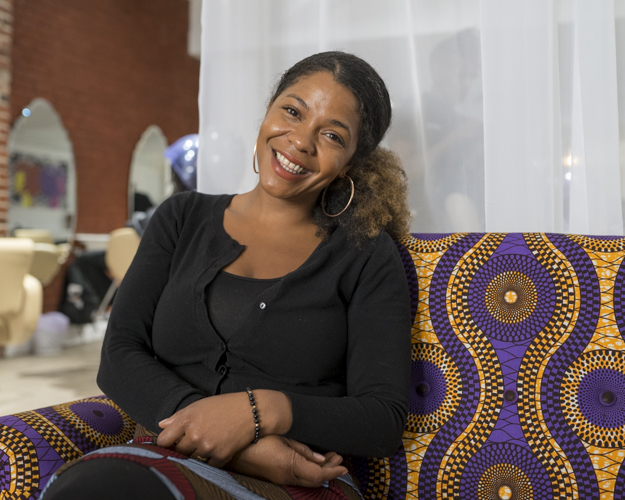
Abisara Machold poses at the entrance of Inhairitance Curl Spa in St. Henri, Montreal. Moving-in from Europe, Machold opened the space in 2010 as she realized the lack of parlours specializing in curly hair. Photo Elisa Barbier
Two years later, she decided to open a salon that specializes in curly hair, which also made and sold hair products for different follicles and textures.
“I realised that with the two opening sessions we had that there is a real market,” said Machold. “There’s a lot of people who want to go natural but don’t know how. […] It developed from a need that I felt was not fulfilled.”
Working in this business, she, like Falaise, also noticed a lack of curly hair education in Montreal hairdressing schools.
“The academy developed almost as a necessity,” Machold continued.
The salon offers in-house training for its hairdressers and curl experts—a program that takes about a year-and-a-half to complete. Machold’s commitment to changing the narrative about natural curly hair in Montreal has also led her to expand the salon’s educational mission: Inhairitance will soon be launching their virtual academy, which will allow people to take several training modules online.
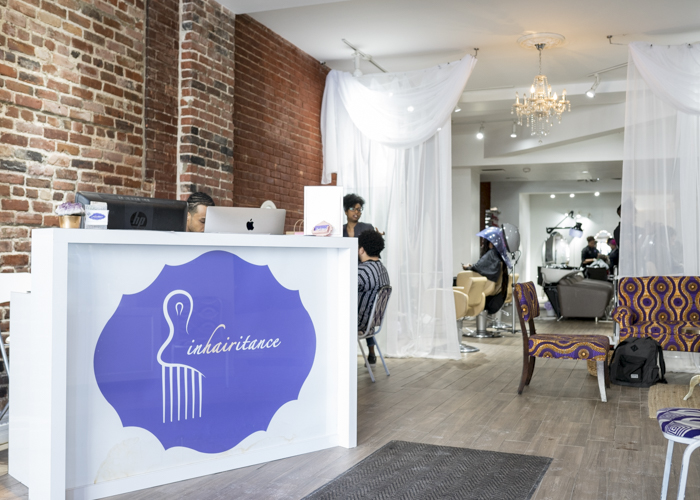
Inhairitance Curl Spa is a parlour specializes in natural curly hair in Montreal’s St. Henri neighbourhood. It offers care and treatment for natural curly hair. Photo Elisa Barbier
Natural hair journeys: embracing natural beauty despite discrimination
Machold explained when you look at curly hair subjectively rather than scientifically, it has long been racialized and discriminated against, which has resulted in societal norms that deem curly, or more specifically, Black hair, un-beautiful, un-feminine, or unprofessional.
“Our efforts throughout history to ‘tame’ [our hair]—even the wording that we use, the vocabulary: to ‘tame,’ to ‘civilize,’ to ‘straighten,’ to ‘relax’ our out-of-control hair [is harmful],” she said.
“I believe that our history of Black hair represents the history of Black people as a collective,” said Machold.
When Machold joined the natural hair movement, she described getting rid of her weaves as a kind of detox. She had to get used to her face with her natural hair, associating it with her personal self, and trying to embrace it.
Yves-Celine Bonhoure, a curl analyst at Inhairitance, explained getting to that point of self-acceptance in your natural hair journey can be incredibly difficult.
“I have clients that cry in my chair, because they’ve been perming their hair for so long, and coming back to their natural hair is a big step into the unknown. For a very long time, people told them their hair wasn’t the right type of hair–they weren’t good enough,” she said. “You have to tell them they’re enough, but also [you need to show them] we have solutions for their hair.”
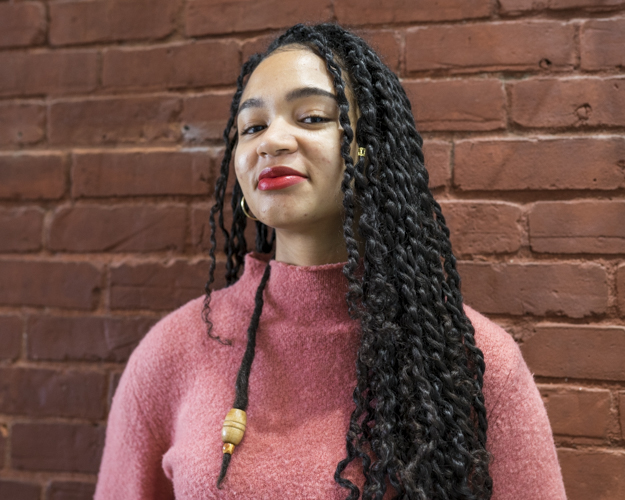
Yves-Celine Bonhoure poses at the entrance of the curl spa Inhairitance in Montreal’s St. Henri neighbourhood. Bonhoure is a curl analyst at the parlour and helps people receive the best treatment for their hair. Photo Elisa Barbier
Bonhoure added a lot of her clients who are mothers have been going back to their natural hair to lead by example for their children.
“Growing up, I didn’t have that example. I had to create it for myself. Coming here [to the salon], it was easier, because [it’s like] we’re in a bubble. Everyone has natural hair. It helps you accept yourself the way you are, and to love it better,” said Bonhoure.
Machold also views her salon’s educational mission as helping current and future generations discover they have options beyond the way things have been for years.
“It’s our generation’s obligation to start creating a different narrative for the children to come, and for the group that is there now,” she said.
Montreal’s natural hair movement: increased awareness and acceptance
When she opened Inhairitance, Machold’s goal was for every curly-haired girl to feel proud and to celebrate her natural beauty. When she came to Montreal and realised the natural hair movement was only just beginning, Machold said she felt the city was behind the times.
Now, Montreal is in the midst of a natural hair movement—in part driven by increased awareness of the harmful side-effects of chemical relaxers and, as Machold underlined, in part because some people go natural out of necessity.
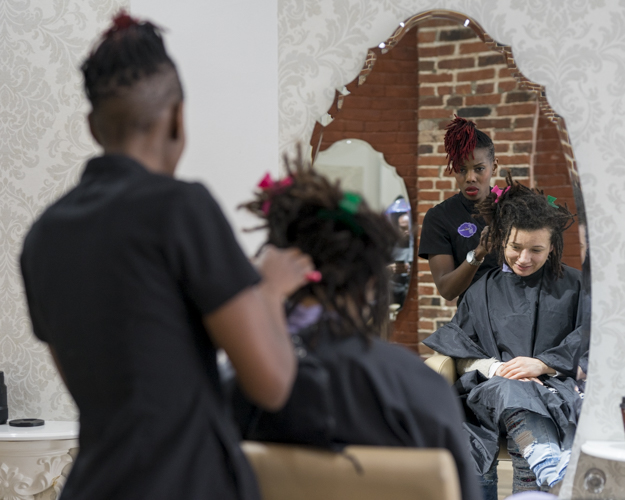
Khady Diallo gives advice to Yelly Bernat as she parts her hair to form dreadlocks. Photo Elisa Barbier
She explained many of Inhairitance’s clients have decided to go this route, because years of using chemical relaxers have lead to hair loss and receding hairlines. After years of “disastrous” braids, perms, jerry curls, and straightened hair, Kathleen Charles said she was essentially forced to go natural, too.
“I had to cut my hair off. I didn’t really decide to go natural; I had to go natural, because my hair burnt off. I had to shave my head,” she said.
Charles has had short, natural hair ever since, which she said has actually helped her embrace and accept herself.
“It’s a journey,” Charles said. “I feel like just accepting it, and realizing how special it is and realizing that nobody else can really imitate your hair [is important]. You can imitate everybody else’s hair texture, but nobody else can imitate yours.”
“It’s Black girl magic,” she said.

